
Creating your own potted plant garden can be super fun and feel like making your own little paradise.
It’s like building a tiny world where all the plants work together in harmony. To start, you need to pick the right pots and plants.
Choosing the right plants is important because they all have different needs, like how much sunlight they need. Some plants are tall and some are short, so you need to think about that too.
This will help make your garden look beautiful and healthy, and make you happy.
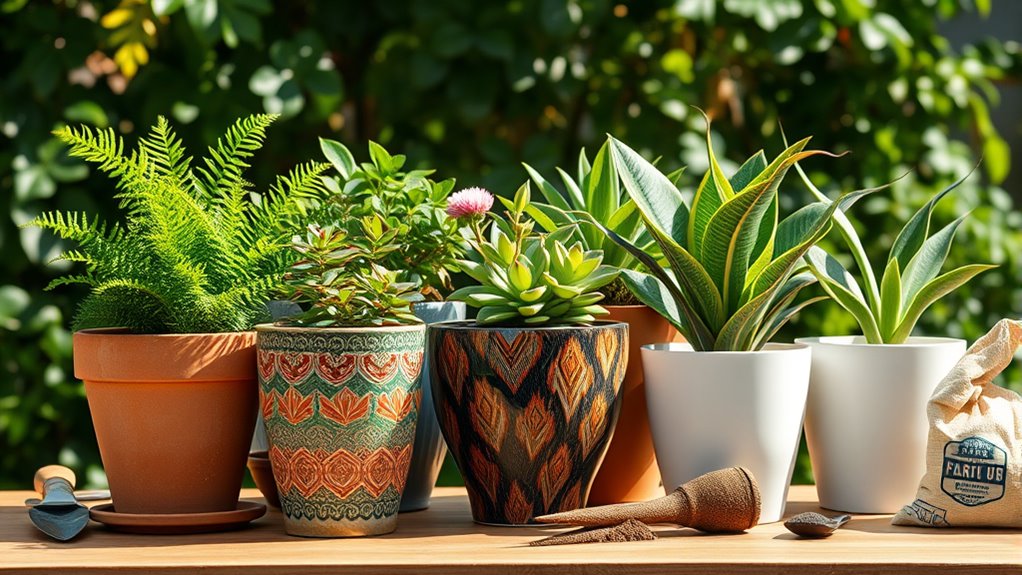
Choosing the right pots is essential for a successful potted plant garden. Consider the material, size, and drainage of the pots. Terra cotta pots are great for breathability, while ceramic pots add color and style but can retain moisture. Make sure the pots have drainage holes to prevent waterlogging. Additionally, select a size that accommodates your plant’s growth; larger pots offer more stability and space for roots. Ultimately, the right pot enhances plant health and garden aesthetics.
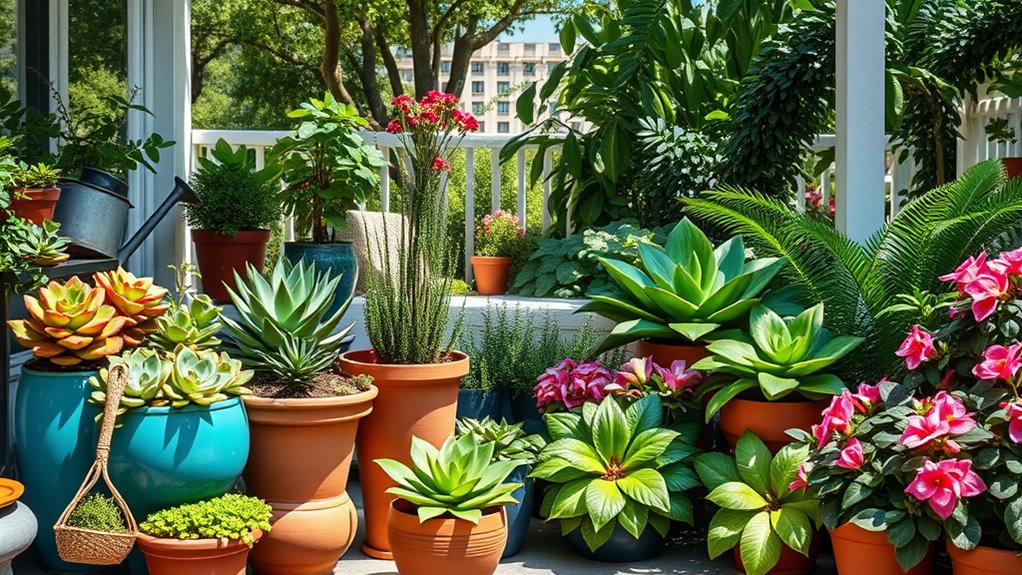
When selecting plants for your potted garden, consider factors such as the amount of sunlight your space receives and the climate in your area. Opt for low-maintenance plants such as succulents or herbs if you’re a beginner. For shaded spots, ferns and shade-loving flowers like begonias thrive. Confirm the pots have proper drainage and choose plants that complement each other in size and color for a visually appealing arrangement.
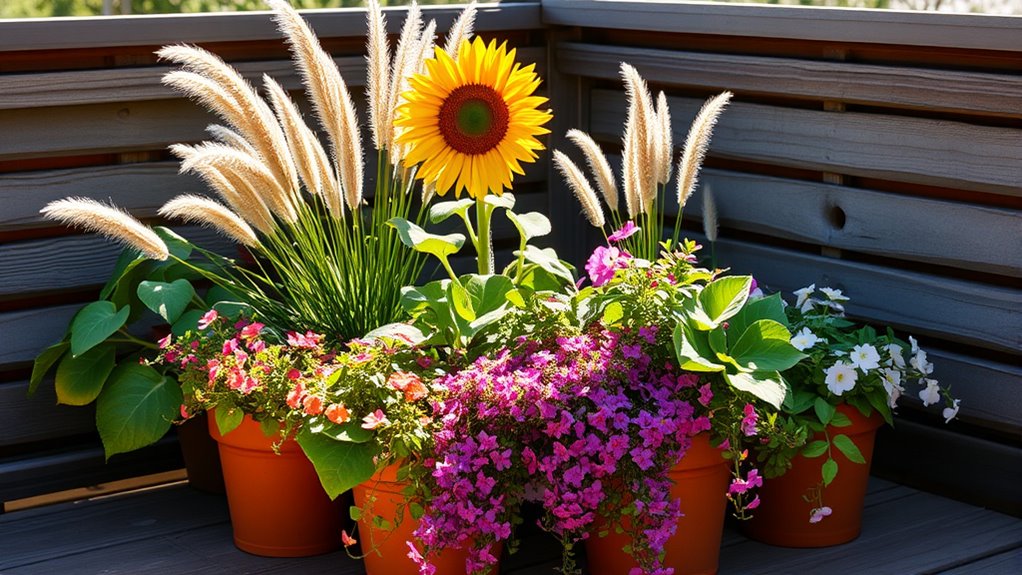
When selecting plants for your potted garden, consider their height and size to create a balanced and visually appealing composition. Taller plants, like sunflowers or ornamental grasses, can serve as focal points, while medium-sized plants should complement them without overwhelming. Use smaller plants or trailing varieties at the front to add depth. Be mindful of growth habits, ensuring each plant has enough space to thrive, which will enhance the overall health and aesthetics of your garden.
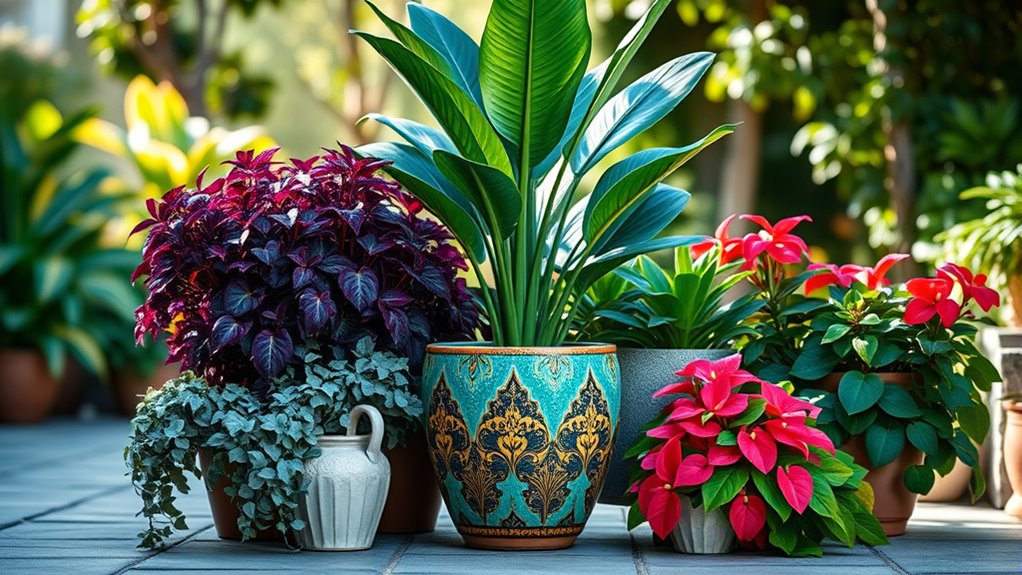
Creating a focal point in your potted plant garden adds visual interest and draws the eye. Choose a standout item, such as a towering plant, an eye-catching sculpture, or a vibrant pot with unique patterns. Position it centrally or at the end of a pathway to guide visitors’ attention. Surround it with complementary plants to enhance its impact, while varying heights and textures for added depth. This focused approach transforms your garden into a fascinating space.
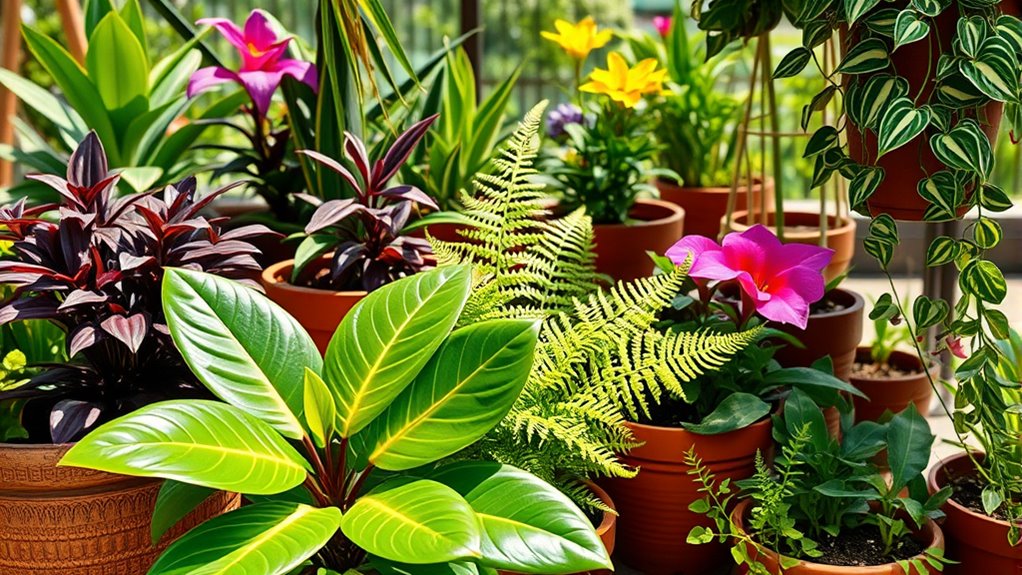
Mixing textures and colors in your potted plant garden can create a visually striking display that captivates and enchants. Combine leafy plants with varying shapes—like the smooth, wide leaves of a rubber plant and the delicate, feathery fronds of a fern—for added interest. Pair vibrant flowering plants in bold hues, such as deep purples and bright yellows, to create a lively contrast. A thoughtful blend of colors and textures will not only enhance the aesthetic appeal but also stimulate the senses, making your garden a delightful retreat.
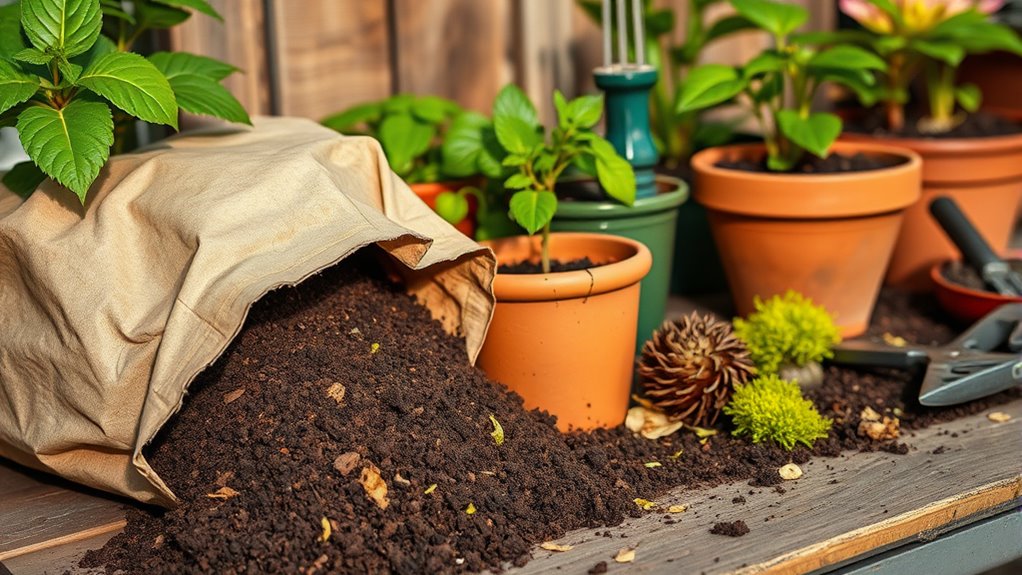
Using quality potting soil is essential for the health and growth of your potted plants. Unlike regular garden soil, potting soil is specifically formulated to provide ideal drainage, aeration, and nutrients. Look for blends that contain organic matter, such as peat moss or compost, as they retain moisture while still allowing excess water to escape. This helps prevent overwatering and root rot, ensuring your plants thrive in their containers. Always choose soil based on the specific needs of your plants for the best results.
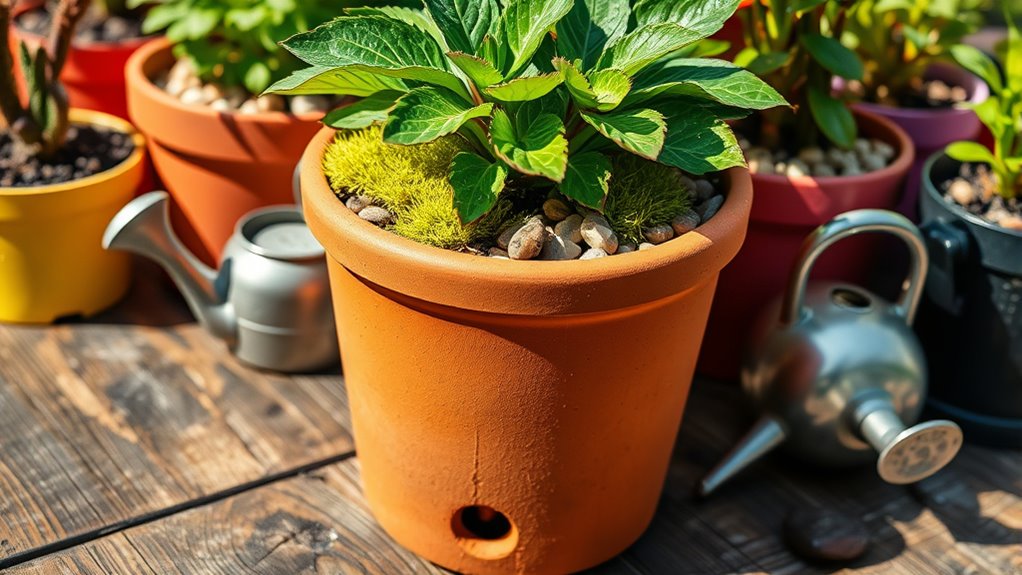
Proper drainage is essential for the health of potted plants, as it prevents water from accumulating at the bottom of the pot, which can lead to root rot. To guarantee adequate drainage, choose pots with holes in the bottom and use a well-draining potting mix. Additionally, adding a layer of gravel or small stones at the pot’s base can further enhance drainage. Regularly check and adjust watering practices based on your plant’s needs and environmental conditions.
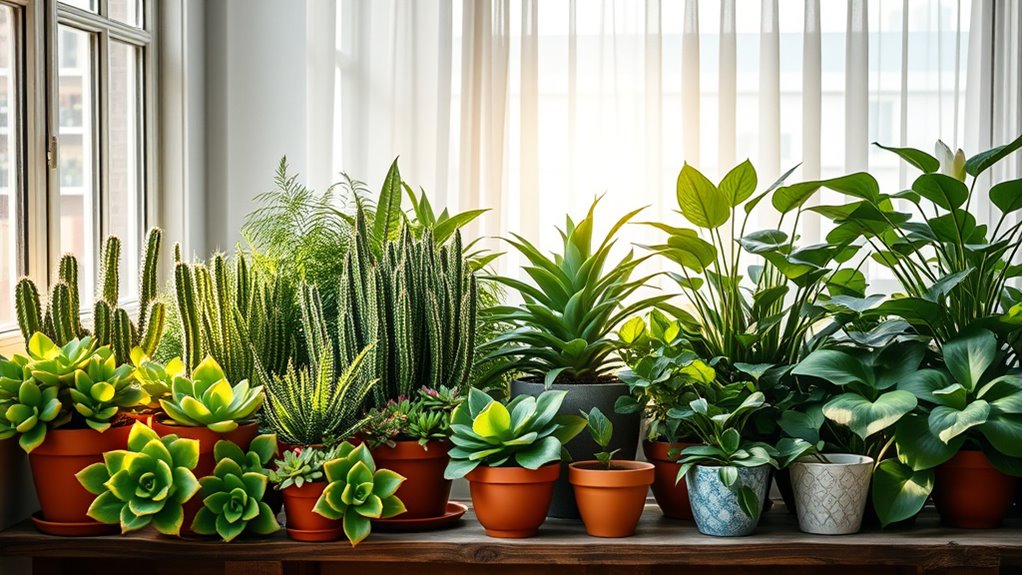
When creating a potted plant garden, it’s important to group your plants based on their light requirements. By doing so, you can guarantee that each plant receives the ideal amount of sunlight for healthy growth. For instance, place sun-loving plants like succulents and cacti in bright, well-lit spots, while shade-tolerant species can be positioned in lower-light areas. This thoughtful arrangement helps create a thriving garden and minimizes the risk of plant stress or damage.
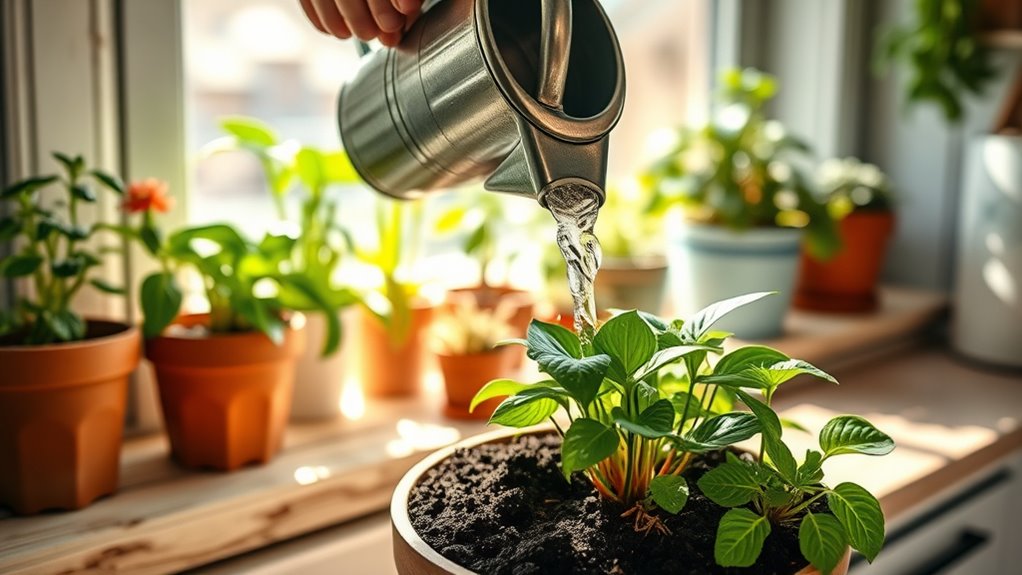
Watering your potted plants wisely is essential for their health and growth. Make sure you check the moisture level of the soil before watering; it’s better to underwater than overwater. A good rule of thumb is to water when the top inch of soil feels dry. Consider using pots with drainage holes to prevent root rot, and adjust your watering schedule according to the season and the specific needs of each plant. Always water in the morning to reduce evaporation and fungal diseases.
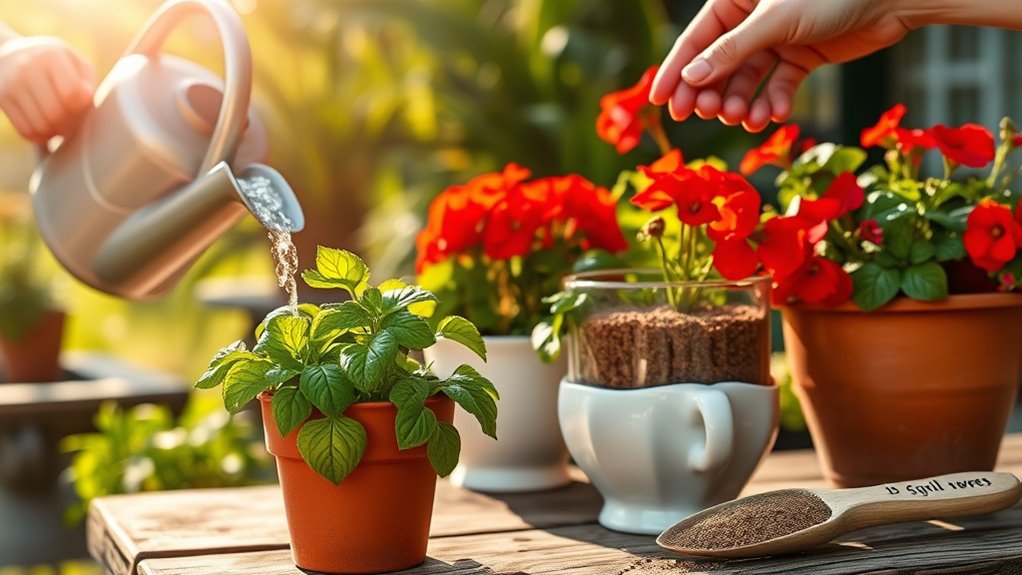
To keep your potted plants healthy and thriving, regular fertilization is key. Use a balanced, water-soluble fertilizer every 4 to 6 weeks during the growing season, typically spring and summer. This provides essential nutrients like nitrogen, phosphorus, and potassium, which support growth and flowering. Always follow the manufacturer’s instructions to avoid over-fertilization, which can harm plants. Remember to adjust the feeding schedule based on your specific plant types and environmental conditions for best results.
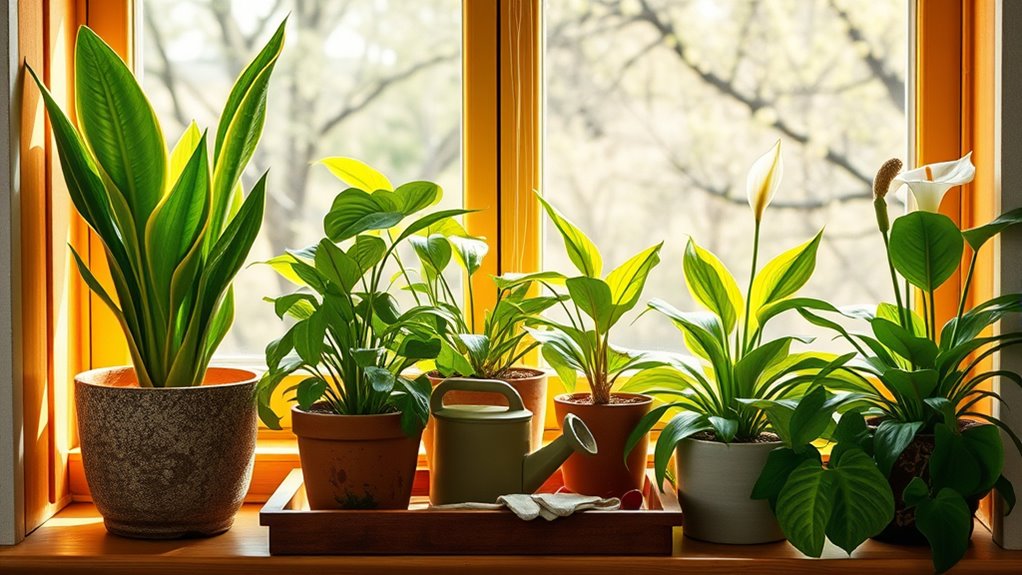
Rotating plants is essential for ensuring even growth, especially for potted plants that receive sunlight from one direction. By regularly repositioning your plants, you prevent them from leaning towards the light and promote balanced growth. Aim to rotate your pots every couple of weeks, giving all sides equal exposure to light and air circulation. This practice enhances the overall health of your plants, leading to fuller foliage and more vibrant blooms.
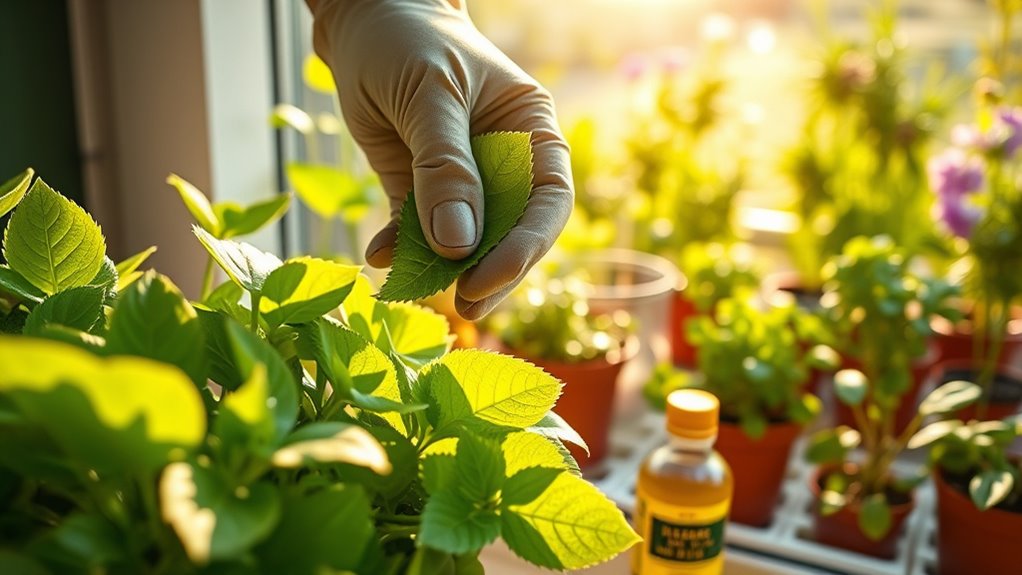
Monitoring for pests is essential to maintaining the health of your potted plants. Regularly inspect the leaves, stems, and soil for any signs of infestations, such as discoloration, webbing, or small insects. Early detection can help prevent significant damage. Utilize organic pest control methods when possible, like neem oil or insecticidal soap. Additionally, consider introducing beneficial insects, like ladybugs, which can help keep pest populations in check naturally.
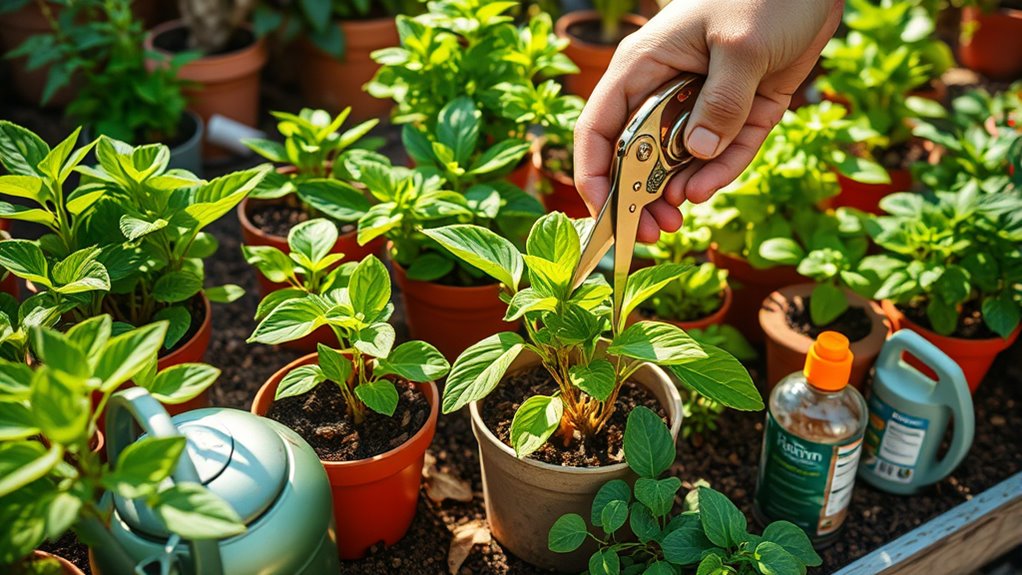
Pruning and maintaining your potted plants are crucial for their health and vigor. Regularly trim dead or yellowing leaves to encourage new growth and maintain an attractive appearance. Monitor your plants for signs of pests or disease and treat them promptly. Additionally, guarantee proper watering and fertilization based on each plant’s specific needs. By dedicating time to care for your plants, you can create a thriving indoor or outdoor garden that continues to flourish.
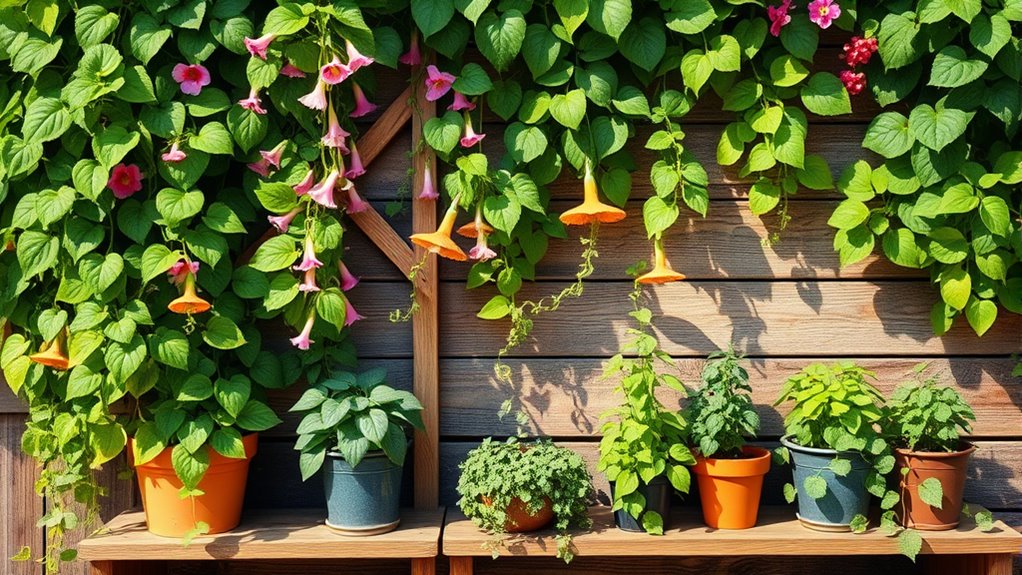
Incorporating vertical gardening into your potted plant setup is a fantastic way to maximize space and create an eye-catching display. By utilizing trellises, shelves, or wall-mounted planters, you can grow plants upward and create a lush, green wall effect. This method not only allows you to cultivate a variety of plants in smaller areas but also enhances air circulation and light exposure, promoting healthier growth. Choose climbing varieties, such as peas or vining flowers, for stunning vertical accents.
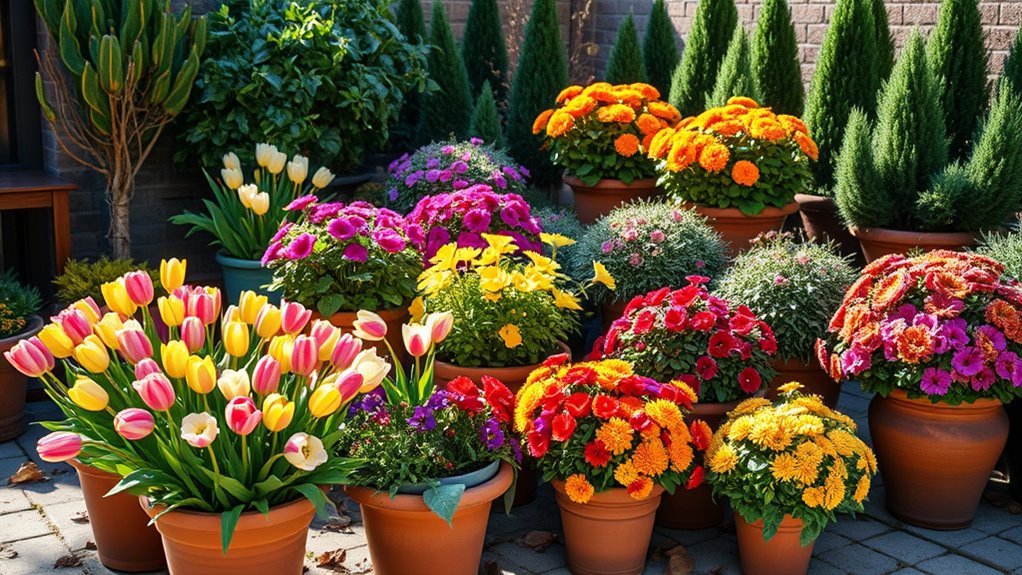
Creating a seasonal garden with potted plants allows you to enjoy year-round beauty and variety. Start by selecting plants that bloom in different seasons, such as spring tulips, summer petunias, autumn chrysanthemums, and winter evergreens. Arrange your pots to create a stunning visual effect, grouping plants by height and color. Regularly change out seasonal blooms to keep your garden lively and fresh, while also considering factors like sunlight and watering needs to guarantee all your plants thrive.
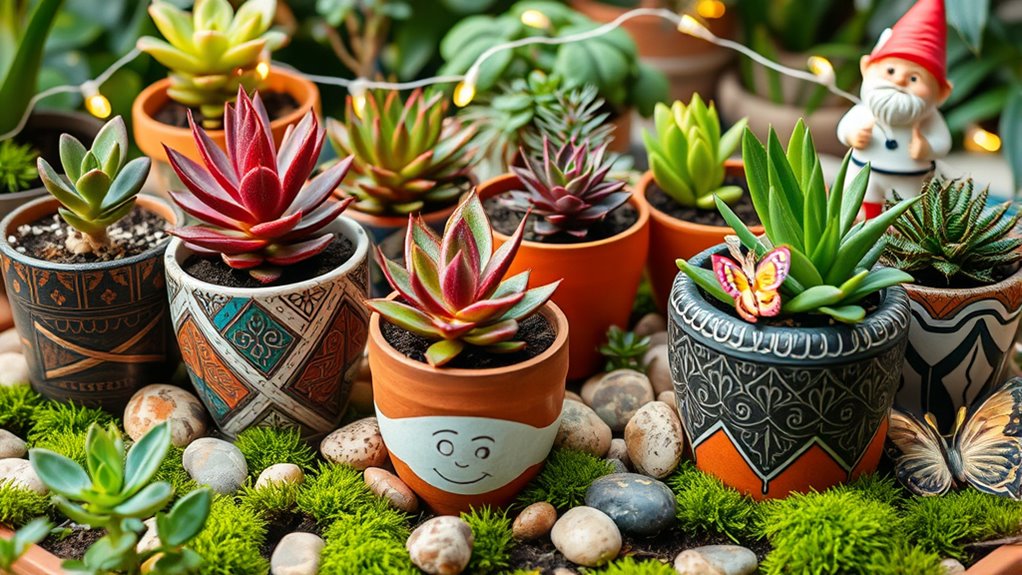
Enhancing your potted plant garden with decorative elements can add a personal touch and create a harmonious visual appeal. Consider using decorative pots that showcase your style, or add ornamental stones, pebbles, or moss to the soil surface for texture. Incorporating figurines, colorful plant markers, or even fairy lights can bring life to your setup. Remember to balance aesthetics with functionality, ensuring that decorative elements do not hinder plant growth or care.
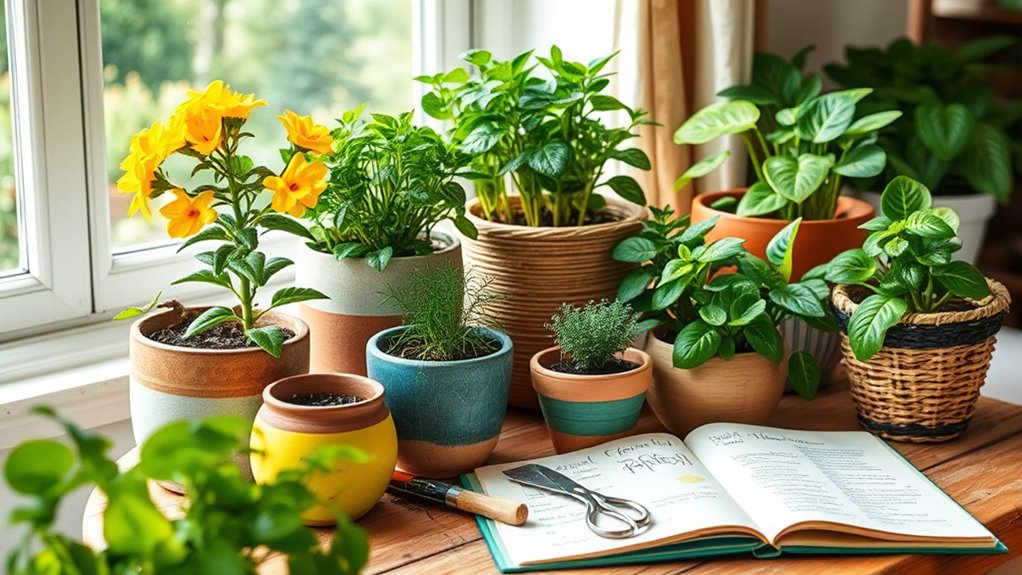
Enjoying the process of gardening is key to cultivating a successful potted plant garden. Embrace the journey by experimenting with different plants, potting mixtures, and arrangements. Each trial helps you understand your plants’ needs and preferences, allowing for a more tailored approach. Don’t be afraid to make mistakes or try new ideas; gardening is as much about learning as it is about aesthetics. The joy lies in watching your plants flourish as you grow alongside them.
By following these tips, you’ll transform your space into a lush potted plant garden that suits your style and needs. Remember, it’s essential to pay attention to your plants’ requirements and conditions—they’re not just pretty faces! So, don’t hesitate to experiment and let your creativity flourish. After all, practice makes perfect, and with every step you take, you’ll gain valuable insights. Enjoy this vibrant journey and watch your garden thrive as you learn along the way.

Don't let aphids, slugs, and caterpillars ruin another plant. Take back control with simple, natural methods that actually work.